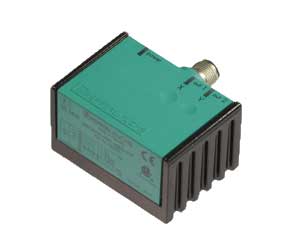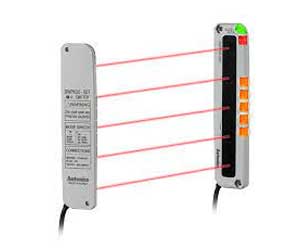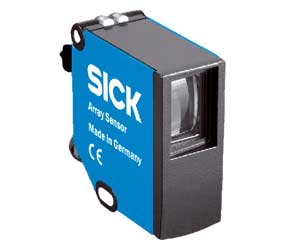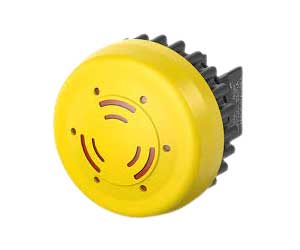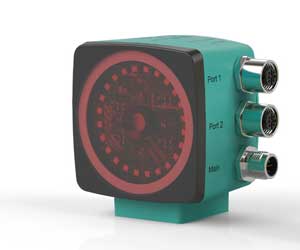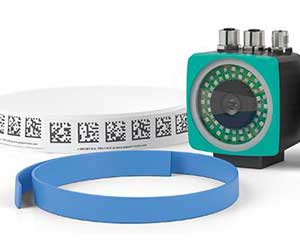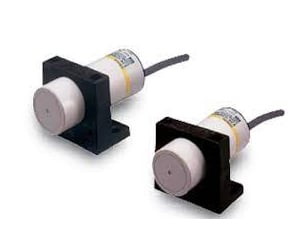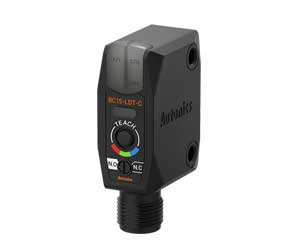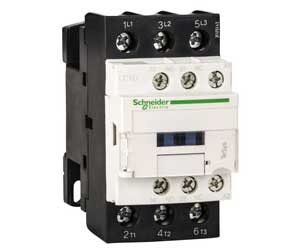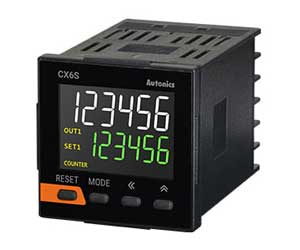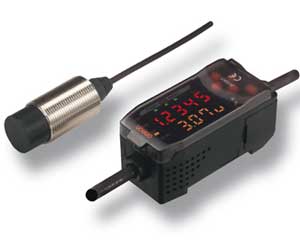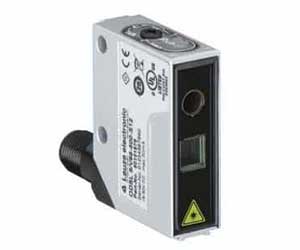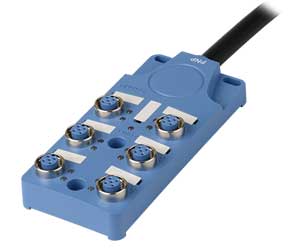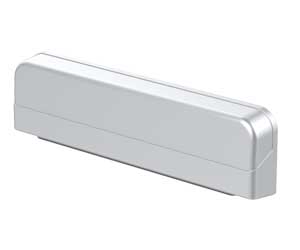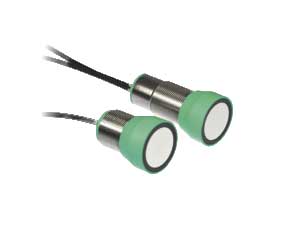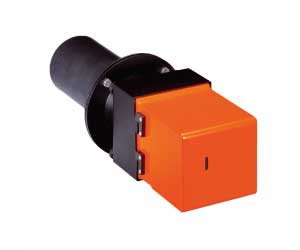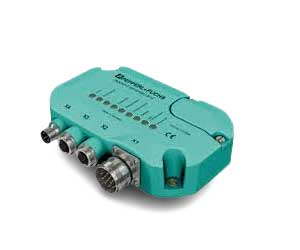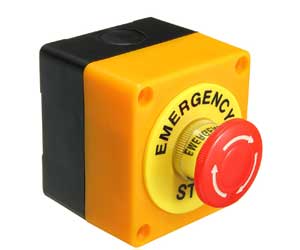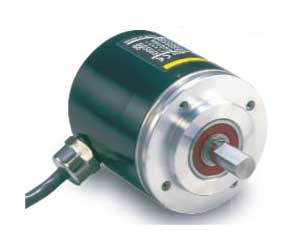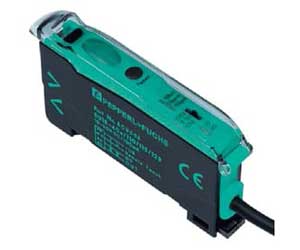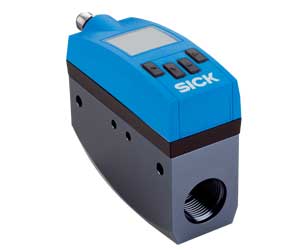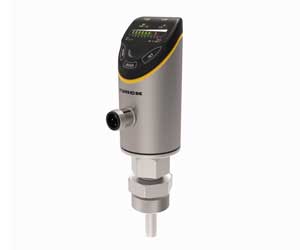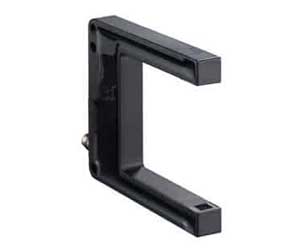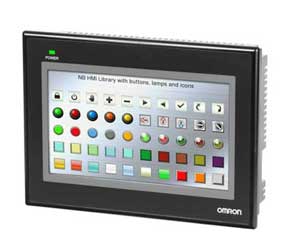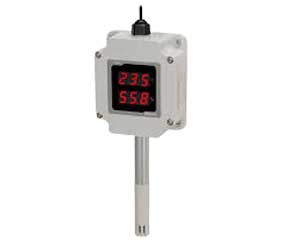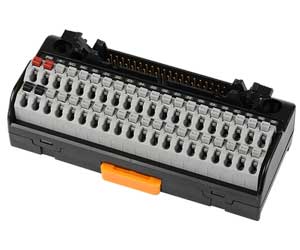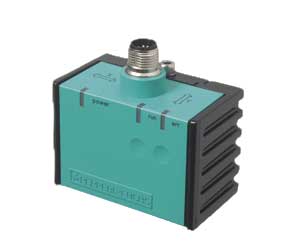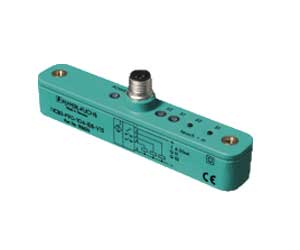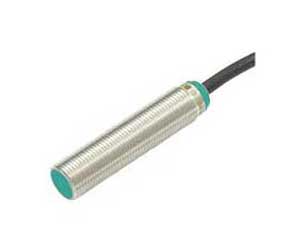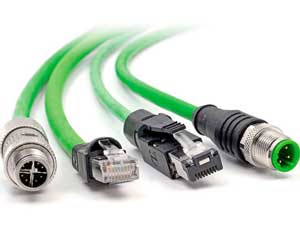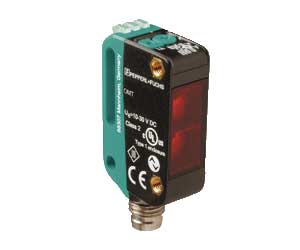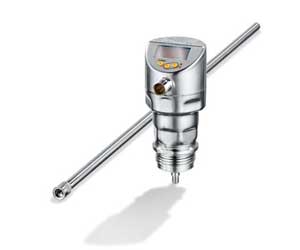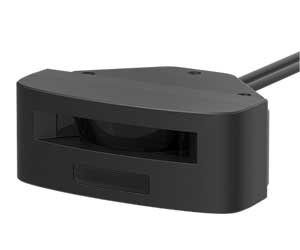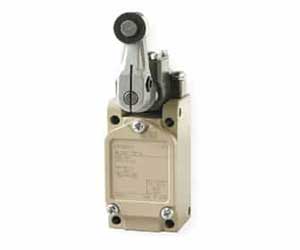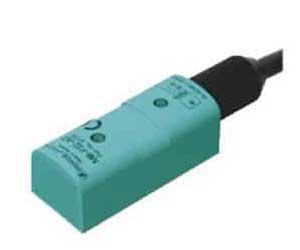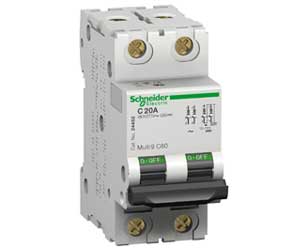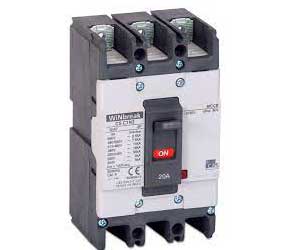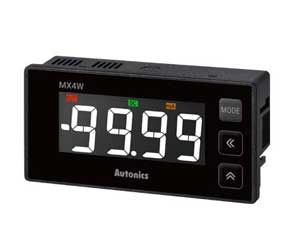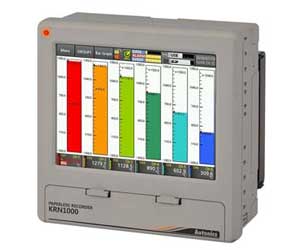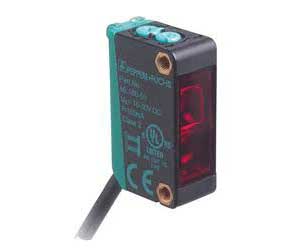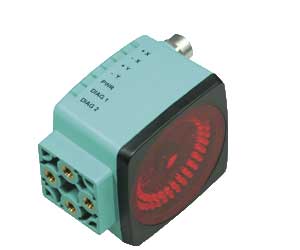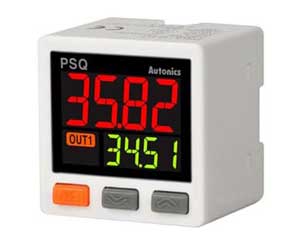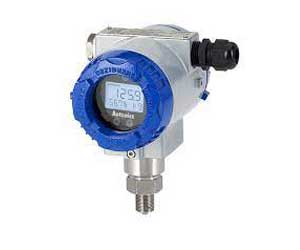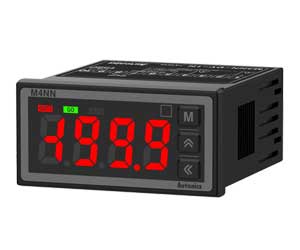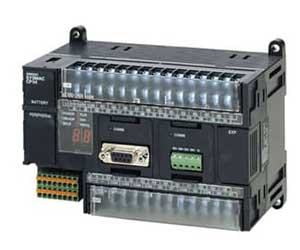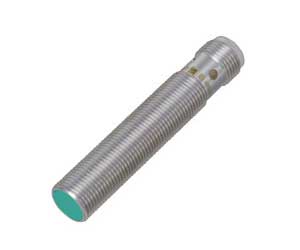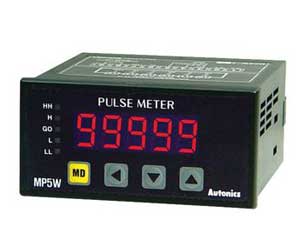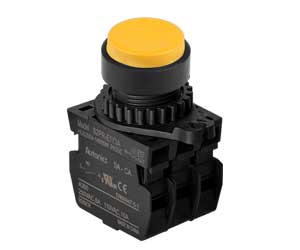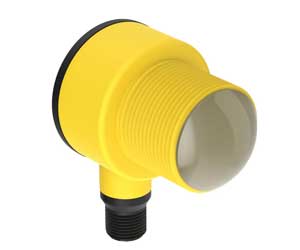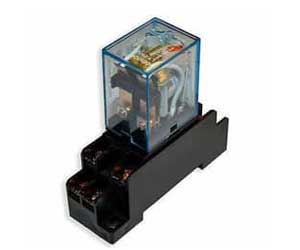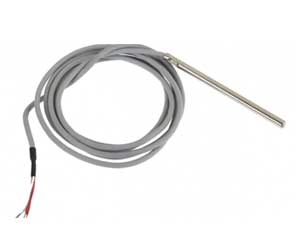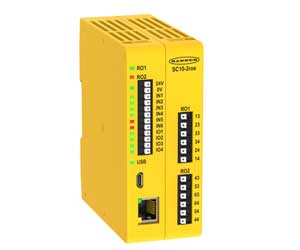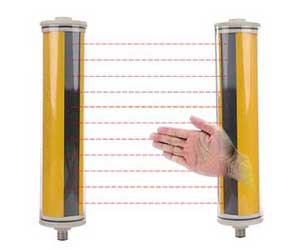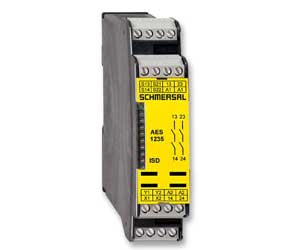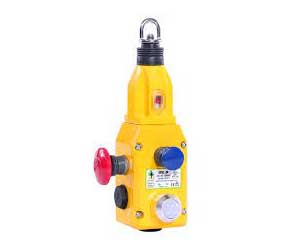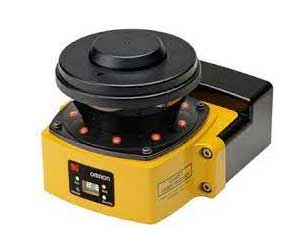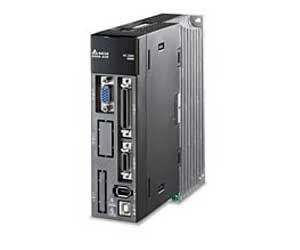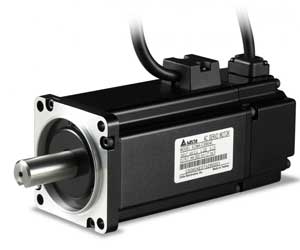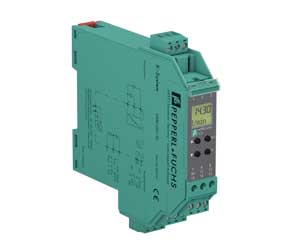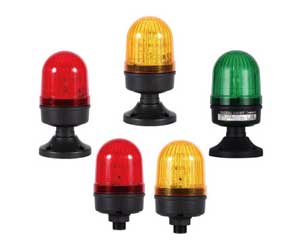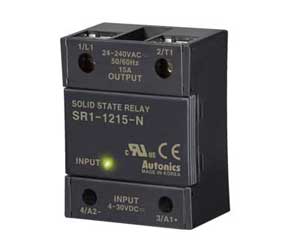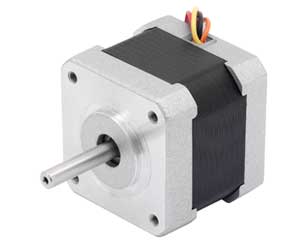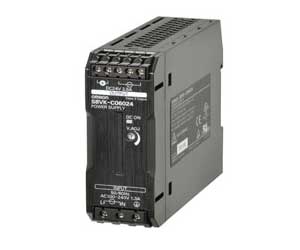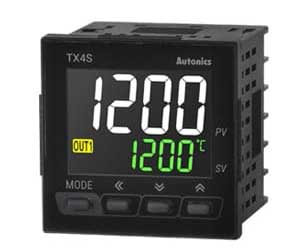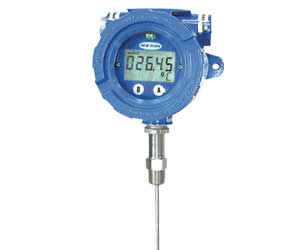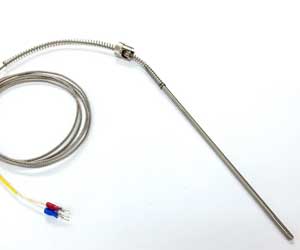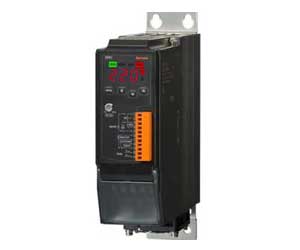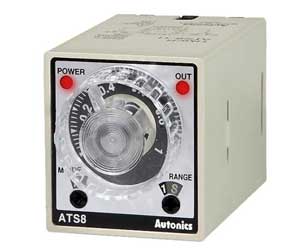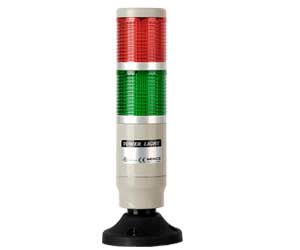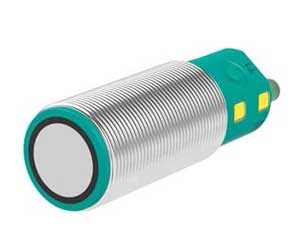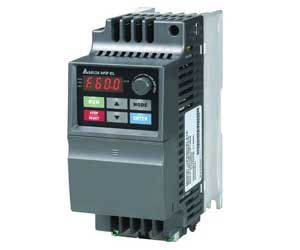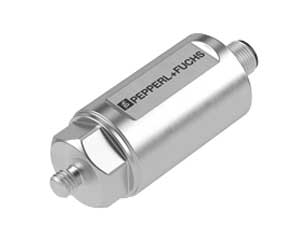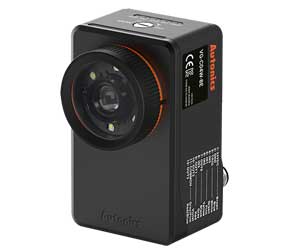
Industrial automation has become a vital component of modern manufacturing processes. By utilizing advanced technology, businesses can streamline their operations, increase efficiency, and improve product quality. One of the key aspects of industrial automation is the use of specialized products designed to automate various tasks. These products are used in a wide range of industries, from automotive to food processing and everything in between.
In this blog post, we will explore the most commonly used industrial automation products. From sensors and controllers to drives and switches, we’ll discuss the different types of products that are essential for automating manufacturing processes. Whether you’re a seasoned automation professional or just starting to learn about industrial automation, this post will provide you with valuable insights into the products that are revolutionizing the manufacturing industry.
A
Acceleration Sensors
Acceleration sensors, also known as accelerometers, are devices that measure acceleration forces in a given direction. They are commonly used in industrial automation and machine monitoring applications to detect motion, vibrations, and shocks.
Acceleration sensors can detect changes in acceleration caused by gravity or motion, and can be used to monitor the health and performance of machines and equipment. They are often integrated with other sensors and devices to provide a comprehensive picture of a machine’s behavior.
Area Sensors
Area sensors, also known as safety light curtains, are devices that use infrared light to create an invisible barrier in a defined area. They are commonly used in industrial automation applications to detect the presence or absence of objects and to safeguard workers by preventing access to hazardous areas. Area sensors can detect objects of different sizes and shapes and can be customized to meet specific requirements.
Area sensors are also available in different designs and sizes to suit different applications, such as small-part detection, machine guarding, and conveyor monitoring.
Array sensors
Array sensors are devices used in industrial automation applications to detect the presence or absence of objects, as well as their position and orientation. They are commonly used in packaging, sorting, and assembly applications, among others.
Array sensors use multiple sensing elements arranged in a grid or line to capture a detailed image of the object or objects passing through the sensing field. Array sensors can also be customized to suit specific requirements, such as high-speed or high-precision applications. With their high resolution and flexibility, array sensors are essential components of many industrial automation systems, ensuring efficient and accurate object detection and handling.
B
Buzzer
A buzzer is a device used in industrial automation applications to provide an audible alert or warning signal. It is commonly used in manufacturing facilities, process control systems, and other industrial applications to alert workers of a specific event or condition, such as an emergency or a malfunction.
Buzzers are typically compact and easy to install, and can be configured to produce different tones or patterns of sound, such as continuous, intermittent, or pulsing. They can be integrated with other devices and systems, such as alarms, sensors, or controllers, to provide comprehensive alert and warning functions.
C
Camera-Based Linear Positioning (PCV, PXV)
Camera-based linear positioning systems, such as PCV and PXV, are devices used in industrial automation applications to precisely measure the position of objects in motion using visual feedback. They are commonly used in manufacturing, robotics, and machine tool industries, among others.
These systems use cameras and image processing algorithms to detect and track the position of a target with respect to a reference point, providing real-time feedback on its displacement and orientation. They can be configured to measure linear or angular positions, with high accuracy and repeatability. Camera-based linear positioning systems can also be customized to suit specific requirements, such as handling high speeds or complex geometries.
Camera-Based Track Guidance (PGV)
Camera-based track guidance systems, such as PGV (Position Guided Vision), are devices used in industrial automation applications to guide automated guided vehicles (AGVs) along a predefined track using visual feedback. They are commonly used in manufacturing and logistics industries, among others.
These systems use cameras and image processing algorithms to detect and track markers or patterns on the floor, providing real-time feedback on the position and orientation of the AGV with respect to the track. They can be configured to handle different types of tracks and layouts, with high accuracy and reliability. Camera-based track guidance systems can also be customized to suit specific requirements, such as handling different lighting conditions or environments.
Capacitive Proximity Sensors
Capacitive proximity sensors detect objects without physical contact by generating an electrostatic field around their active surface. When an object enters this field, it changes the capacitance of the sensor, triggering a response such as an electrical signal or a change in the sensor’s output state.
They are commonly used to detect non-metallic objects like liquids and powders, and in harsh environments, as they are immune to electromagnetic interference and can withstand exposure to dust, dirt, and moisture. These sensors are highly accurate, reliable, easy to install and require minimal maintenance. Capacitive proximity sensors are essential in industrial automation systems, operating at high speeds across a range of applications.
Color Mark Sensors
Color mark sensors are specialized sensors used in industrial automation to detect specific colors or patterns on objects. They emit a beam of light onto an object’s surface and measure the amount of light reflected back to the sensor.
They are commonly used in the printing and packaging industries and are capable of detecting multiple colors and patterns. These sensors are highly accurate, even in low light conditions, easy to install and require minimal maintenance. Color mark sensors are essential in ensuring the efficient and accurate operation of manufacturing processes by detecting specific colors and patterns on objects.
Contactors
Contactors are devices used in industrial automation applications to control and switch high-power loads, such as motors, heaters, and lighting. They are commonly used in manufacturing, process control, and HVAC industries, among others. Contactors use an electromagnetic coil to control the opening and closing of contacts, which in turn control the flow of current to a load.
They can be configured to handle various types of loads and voltages, and can operate in harsh or difficult conditions, such as high temperatures or corrosive environments. Contactors can also be customized to suit specific requirements, such as providing different types of contacts, such as NO (normally open) or NC (normally closed), or providing different types of auxiliary contacts, such as low-voltage or signal contacts.
Counters
Counters are devices used in industrial automation to count events or occurrences, such as the number of objects passing through a production line. They are often used in conjunction with sensors or other devices that detect the events to be counted.
Counters can be either electronic or mechanical and come in a range of types, including preset counters, totalizing counters, and batch counters. They can be used for a variety of applications, such as inventory management, production line monitoring, and quality control.
D
Displacement Sensors
Displacement sensors are devices used in industrial automation applications to measure the distance or displacement of objects in motion. They are commonly used in manufacturing, robotics, and machine tool industries, among others. Displacement sensors use various technologies, such as contact or non-contact sensors, to detect the position of a target with respect to a reference point, providing real-time feedback on its displacement and orientation.
They can be configured to measure linear or angular displacement, with high accuracy and repeatability. Displacement sensors can also be customized to suit specific requirements, such as handling harsh environments or extreme temperatures.
Distance Sensors
Distance sensors are devices used in industrial automation to measure the distance between the sensor and an object or surface. They work by emitting a signal, such as sound waves or light, and measuring the time it takes for the signal to reflect back to the sensor.
Distance sensors can be used in a wide range of applications, including robotics, manufacturing, and logistics. They can detect the presence or absence of objects, as well as their position and orientation.
Distributor Boxes
Distributor boxes, also known as terminal blocks, are devices used in industrial automation and control systems to distribute power and signals to multiple devices. They serve as a centralized connection point for cables and wires, allowing for easy wiring and maintenance of the system.
Distributor boxes can be configured to handle different types of connections, such as screw terminals, spring terminals, or insulation displacement connections. They can also be customized to meet specific requirements, such as high current or voltage applications. Distributor boxes come in different sizes and shapes, and can be mounted in various ways, such as on a DIN rail or a panel. They are a critical component of many industrial automation systems, ensuring reliable and efficient power and signal distribution.
Door Sensors
Door sensors are devices that detect the opening and closing of doors in industrial automation applications. They are commonly used in automated doors, security systems, and other applications where it is necessary to monitor the status of doors.
Door sensors can detect the movement of doors using various technologies, such as magnetic, optical, or mechanical sensors. They can be configured to trigger alarms, activate other devices, or provide feedback to a control system. Door sensors come in different sizes and designs, and can be customized to suit specific requirements, such as sensing the position or speed of a door.
Double Sheet Sensors
Double sheet sensors are devices used in industrial automation applications to detect the presence of multiple sheets of material in a stack. They are commonly used in sheet metal processing, printing, and other industries where precise sheet detection is required.
Double sheet sensors use various technologies, such as ultrasonic, or optical sensors, to detect the thickness and composition of the stack of sheets. They can be configured to trigger alarms, activate other devices, or provide feedback to a control system. Double sheet sensors come in different sizes and designs, and can be customized to suit specific requirements, such as sensing the orientation or alignment of the sheets.
Dust Measuring Devices
Dust measuring devices are devices used in industrial automation applications to measure the concentration of dust and particulate matter in the air. They are commonly used in manufacturing facilities, mines, and other industries where airborne particles can pose a health risk to workers or affect the quality of products.
Dust measuring devices use various technologies, such as optical scattering, beta attenuation, or electrostatic precipitation, to detect and quantify the concentration of particles in the air. They can be configured to trigger alarms, activate other devices, or provide feedback to a control system. Dust measuring devices come in different sizes and designs, and can be customized to suit specific requirements, such as measuring the particle size or composition.
E
Electronic CAM-Switch Controller (PAX)
Electronic CAM-Switch Controller, also known as PAX, is a device used in industrial automation applications to control the positioning of machines and equipment. PAX is an electronic version of the traditional cam-switch controller, which uses a mechanical cam to control the operation of machines.
PAX uses digital technology to create and control virtual cams, allowing for more precise and flexible control of machines. PAX can be programmed to control various types of machines, such as conveyor systems, packaging machines, and assembly lines
Emergency Stop Switch
An emergency stop switch, also known as an E-stop, is a safety device used in industrial automation applications to quickly and easily stop the operation of machines and equipment in an emergency. The emergency stop switch is typically a large red button that, when pressed, immediately cuts power to the machine or equipment, bringing it to a safe stop.
The emergency stop switch is typically positioned in a highly visible and easily accessible location, allowing workers to quickly respond to emergencies. The emergency stop switch can also be integrated with other safety devices, such as safety curtains, light curtains, or interlocks, to provide comprehensive safety protection.
Encoders
Encoders are devices used in industrial automation to measure and track the movement of machinery and equipment. They work by converting mechanical motion into electrical signals that can be interpreted by a controller or computer.
Encoders come in various types, including linear encoders, incremental encoders, and absolute encoders. They are commonly used in robotics, manufacturing, and motion control systems to provide accurate and precise positioning information.
F
Fiber Optic Sensors
Fiber optic sensors are devices used in industrial automation to detect changes in light intensity or color. They work by using a fiber optic cable to transmit light to and from the sensing element, which detects changes in the light signal.
Fiber optic sensors are highly versatile and can be used in a wide range of applications, including temperature sensing, pressure sensing, and distance sensing. They are often used in harsh environments where traditional sensors may not be able to operate, such as in high temperatures or in areas with high electromagnetic interference.
Flow Sensors
Flow sensors are devices used in industrial automation applications to measure the flow rate of liquids or gases in pipes or ducts. They are commonly used in chemical processing, water treatment, and HVAC systems, among other applications.
Flow sensors use various technologies, such as thermal, magnetic, or ultrasonic sensors, to detect the flow of fluids and gases. They can be configured to measure different parameters, such as flow velocity, volume, or mass flow rate. Flow sensors can also be customized to suit specific requirements, such as handling high pressures or temperatures.
Fluid Sensors
Fluid sensors are devices used in industrial automation applications to detect and measure the properties of fluids, such as liquid or gas. They are commonly used in chemical processing, water treatment, and oil and gas industries, among others.
Fluid sensors use various technologies, such as capacitive, ultrasonic, or optical sensors, to detect the presence, level, temperature, or pressure of fluids. They can be configured to trigger alarms, activate other devices, or provide feedback to a control system. Fluid sensors can also be customized to suit specific requirements, such as handling corrosive or hazardous fluids.
Fork Sensors
Fork sensors, also known as slot sensors, are devices used in industrial automation applications to detect the presence or absence of objects passing through a slot or gap between two forks. They are commonly used in packaging, labeling, and assembly applications, among others.
Fork sensors use various technologies, such as optical or ultrasonic sensors, to detect the interruption of a beam of light or sound by an object passing through the slot. They can be configured to trigger alarms, activate other devices, or provide feedback to a control system.
Fork sensors can also be customized to suit specific requirements, such as sensing the color, size, or shape of objects passing through the slot.
H
Human Machine Interface (HMI)
Human Machine Interface (HMI) is a device or software used in industrial automation to allow users to interact with and control various machines and equipment. HMIs are designed to simplify the interface between humans and machines, making it easier for operators to monitor and control automated systems.
HMIs come in various forms, including touchscreens, keypads, and graphical displays. They allow users to monitor and control various parameters of the automated systems, such as temperature, pressure, speed, and other factors.
Humidity Sensors
Humidity sensors are devices used in industrial automation applications to measure the amount of moisture in the air or in a gas. They are commonly used in manufacturing facilities, HVAC systems, and other industries where humidity control is critical to the process or product quality.
Humidity sensors use various technologies, such as capacitive, resistive, or optical sensors, to detect the relative humidity or absolute humidity of the air or gas. They can be configured to trigger alarms, activate other devices, or provide feedback to a control system. Humidity sensors can also be customized to suit specific requirements, such as handling high temperatures or humidity levels.
I
I/O Terminal Blocks
I/O terminal blocks are devices used in industrial automation applications to provide connections between field devices and control systems. They are commonly used in manufacturing facilities, process control systems, and other industrial applications to connect sensors, actuators, switches, and other field devices to controllers, PLCs, or HMIs.
I/O terminal blocks are available in various sizes and configurations, with different types of connections, such as screw terminals or spring terminals, to accommodate different types of wires and cables. They can be customized to suit specific requirements, such as providing surge protection or shielding against electromagnetic interference. I/O terminal blocks can also be integrated with other devices and systems, such as relays, fuses, or surge protectors, to provide comprehensive protection and control.
Inclination Sensors
Inclination sensors are devices used in industrial automation applications to measure the angle of inclination or tilt of an object with respect to gravity. They are commonly used in the construction, transportation, and aerospace industries, among others.
Inclination sensors use various technologies, such as MEMS-based sensors, to detect changes in orientation and provide real-time feedback on the angle of inclination or tilt. They can be configured to trigger alarms, activate other devices, or provide feedback to a control system. Inclination sensors can also be customized to suit specific requirements, such as handling harsh environments or extreme temperatures.
Inductive Positioning Systems (PMI)
Inductive Positioning Systems, also known as PMI (Position Measuring System with Inductive Sensor), are devices used in industrial automation applications to precisely measure the position of objects in motion. They are commonly used in manufacturing, robotics, and machine tool industries, among others.
PMI systems use inductive sensors to detect the position of a target with respect to a reference point, providing real-time feedback on its displacement and orientation. They can be configured to measure linear or angular positions, with high accuracy and repeatability. PMI systems can also be customized to suit specific requirements, such as handling high speeds or harsh environments.
Inductive Proximity Sensors
Inductive proximity sensors are devices used in industrial automation to detect the presence or absence of metallic objects. They work by generating an electromagnetic field that interacts with a metal object, causing a change in the field that is detected by the sensor.
Inductive proximity sensors are commonly used in manufacturing and assembly lines for object detection and positioning, as well as for monitoring conveyor belts and other automated systems. They come in various sizes and can be customized to fit specific application requirements.
Industrial Ethernet
Industrial Ethernet is a type of computer networking technology used in industrial automation applications. It is a version of the Ethernet protocol that is designed specifically for use in harsh and demanding industrial environments, such as manufacturing, oil and gas, and transportation industries.
Industrial Ethernet provides a reliable, high-speed communication network between industrial devices and control systems, allowing for real-time monitoring, control, and data exchange. It supports a range of communication protocols, such as Modbus TCP, Profinet, and EtherNet/IP, and can be used to connect various industrial devices, such as sensors, actuators, controllers, and HMIs. Industrial Ethernet networks can also be integrated with other industrial automation systems, such as PLCs, SCADA systems, and MES systems, to provide comprehensive control and monitoring capabilities.
IO-Link
IO-Link is a communication protocol used in industrial automation applications to connect sensors and actuators to a control system. It is a point-to-point communication protocol that allows for bi-directional communication between devices, enabling the exchange of data and parameters in real-time. IO-Link provides a standardized interface for connecting sensors and actuators, simplifying the integration process and reducing the need for customized hardware and software.
It supports a range of communication speeds, ranging from 4.8 kbps to 230.4 kbps, and can be used to connect various types of devices, such as temperature sensors, pressure sensors, and valve controllers. IO-Link devices can also be configured and diagnosed remotely, reducing the need for manual intervention and improving system uptime. With its flexibility, standardization, and ease of use, IO-Link is an essential technology for many industrial automation systems, providing efficient and reliable communication between devices and control systems.
L
Laser Sensors
Laser sensors are devices used in industrial automation applications to measure distance, position, or other parameters using laser technology. They are commonly used in manufacturing, robotics, and material handling industries, among others.
Laser sensors use a laser beam to detect the position or distance of an object, providing real-time feedback on its position, orientation, or surface characteristics. They can be configured to measure various parameters, such as distance, height, thickness, or surface roughness, with high accuracy and speed. Laser sensors can also be customized to suit specific requirements, such as handling harsh environments or high temperatures.
Level Sensors
Level sensors are devices used in industrial automation applications to detect and measure the level of liquids, powders, or granular materials in tanks or silos. They are commonly used in chemical processing, water treatment, food and beverage, and material handling industries, among others.
Level sensors use various technologies, such as ultrasonic, capacitive, or pressure sensors, to detect the level of material and provide real-time feedback on its volume or weight. They can be configured to handle different types of materials, such as liquids, solids, or slurries, and can be customized to suit specific requirements, such as handling high temperatures or corrosive materials.
LiDAR (Light Detection and Ranging)
LiDAR (Light Detection and Ranging) is a technology used in industrial automation applications to measure distance, position, and orientation using laser-based sensing. It is a remote sensing method that uses lasers to send pulses of light to a target, and then measures the time it takes for the reflected light to return to the sensor. LiDAR can be used to create highly accurate 3D maps of objects and environments, and can be used for various industrial applications, such as robotic navigation, autonomous vehicles, and construction site monitoring.
LiDAR sensors can be configured to measure various parameters, such as distance, height, thickness, or surface roughness, with high accuracy and speed. They can also be customized to suit specific requirements, such as handling harsh environments or high temperatures.
Limit Switch
Limit switches are devices used in industrial automation to detect the presence or absence of an object or to indicate when a moving object has reached a predetermined position. They work by using a mechanical lever or plunger to activate an electrical switch when a certain position is reached.
Limit switches are commonly used in manufacturing and assembly lines for machine control and safety, as well as for monitoring conveyor belts and other automated systems. They come in various sizes and can be customized to fit specific application requirements.
M
Magnetic Proximity Sensors
Magnetic proximity sensors are devices used in industrial automation to detect the presence or absence of metallic objects using a magnetic field. They work by generating a magnetic field that interacts with a metal object, causing a change in the field that is detected by the sensor.
Magnetic proximity sensors are commonly used in manufacturing and assembly lines for object detection and positioning, as well as for monitoring conveyor belts and other automated systems. They come in various sizes and can be customized to fit specific application requirements.
MCB (Miniature Circuit Breaker)
MCB (Miniature Circuit Breaker) is an electrical device used in industrial automation applications to protect electrical circuits from overloading or short circuits. They are commonly used in manufacturing, process control, and HVAC industries, among others. MCBs are designed to interrupt the flow of current in a circuit when it exceeds a preset value, preventing damage to equipment and personnel.
MCBs use an electromagnetic mechanism or a thermal trip to trip the circuit when the current exceeds a certain limit. They can be configured to handle various types of loads and voltages, and can operate in harsh or difficult conditions, such as high temperatures or corrosive environments. MCBs can also be customized to suit specific requirements, such as providing different types of tripping curves, such as B, C, or D, or providing different types of poles, such as a single pole, double pole, or triple pole.
MCCB (Molded Case Circuit Breaker)
MCCB (Molded Case Circuit Breaker) is an electrical device used in industrial automation applications to protect electrical circuits from overloading or short circuits. They are commonly used in manufacturing, process control, and HVAC industries, among others. MCCBs are designed to interrupt the flow of current in a circuit when it exceeds a preset value, preventing damage to equipment and personnel.
MCCBs use an electromagnetic mechanism or a thermal trip to trip the circuit when the current exceeds a certain limit. They can be configured to handle various types of loads and voltages, and can operate in harsh or difficult conditions, such as high temperatures or corrosive environments. MCCBs can also be customized to suit specific requirements, such as providing different types of tripping curves, such as B, C, or D, or providing different types of poles, such as single pole, double pole, or triple pole.
P
Panel Meters
Panel meters are devices used in industrial automation to display and measure various parameters such as voltage, current, temperature, pressure, and flow rate. They are commonly mounted on control panels and are used to monitor the performance of automated systems.
Panel meters come in various types, including digital, analog, and LED, and can be customized to fit specific application requirements. They are designed to be easy to read and operate and can provide real-time data on system performance.
Paperless Recorder
A paperless recorder is an industrial automation device used to monitor and record various process parameters such as temperature, pressure, and flow rate. Unlike traditional chart recorders, paperless recorders use electronic storage to record and display data, eliminating the need for paper charts.
Paperless recorders come in various types and can be customized to fit specific application requirements. They are designed to be user-friendly and can provide real-time data on system performance. Additionally, they can be integrated with other components of automation systems to provide a complete monitoring and control solution.
Photoelectric Sensors
Photoelectric sensors are industrial automation devices that use light to detect the presence or absence of objects. They are commonly used in manufacturing processes to automate tasks such as part detection, counting, and positioning.
Photoelectric sensors come in various types, including through-beam, retro-reflective, and diffuse, and can be customized to fit specific application requirements. They are designed to be reliable and durable, even in harsh environments, and can provide real-time data on object detection.
Precision Positioning (PHA)
Precision positioning systems, such as PHA (Precision Hollow-shaft Absolute Encoder), are devices used in industrial automation applications to precisely control the position and speed of motion systems. They are commonly used in manufacturing, robotics, and machine tool industries, among others.
Precision positioning systems use various technologies, such as encoders, linear motors, or ball screws, to provide highly accurate and repeatable motion control. PHA systems, in particular, use a hollow-shaft absolute encoder to detect the position of a rotating shaft, providing real-time feedback on its position and orientation.
Pressure Sensors
Pressure sensors are industrial automation devices that measure the pressure of a gas or liquid in a system. They are commonly used in manufacturing processes to monitor and control pressure levels in equipment and machinery.
Pressure sensors come in various types, including gauge, absolute, and differential, and can be customized to fit specific application requirements. They are designed to be accurate and reliable, even in harsh environments, and can provide real-time data on pressure levels.
Pressure Transmitters
Pressure transmitters are devices used in industrial automation applications to measure and transmit pressure information from sensors to control systems. They are commonly used in manufacturing, oil and gas, and chemical processing industries, among others.
Pressure transmitters use various technologies, such as piezoresistive or capacitive sensors, to detect changes in pressure and provide real-time feedback on its magnitude and direction. They can be configured to handle various types of pressure, such as gauge pressure, absolute pressure, or differential pressure, with high accuracy and repeatability.
Process Displays
Process displays are devices used in industrial automation applications to visualize and monitor process variables and system parameters in real time. They are commonly used in manufacturing, chemical processing, and water treatment industries, among others.
Process displays can show various types of information, such as temperature, pressure, flow rate, level, or pH, in a clear and easy-to-understand format, using analog or digital displays. They can be configured to provide alarms or alerts when process variables exceed predefined limits, and can also display trend data or historical information for process analysis and optimization.
Programmable Logic Controllers (PLC)
Programmable Logic Controllers (PLCs) are industrial automation devices that are used to control and automate various processes in manufacturing environments. PLCs can be programmed to execute specific tasks and control various machines and equipment on a factory floor.
PLCs come in different types and sizes to fit specific application requirements. They are designed to be rugged and reliable, with the ability to withstand harsh industrial environments. Programmable controllers are used in various industries, from automotive to food processing and oil & gas, to automate and optimize processes.
Proximity Sensors
Proximity sensors are industrial automation devices that are used to detect the presence of nearby objects without physical contact. These sensors can detect a variety of objects, including metals, plastics, and liquids, and are widely used in manufacturing processes to automate tasks, monitor equipment, and improve safety.
There are various types of proximity sensors, including inductive, capacitive, ultrasonic, and magnetic sensors, each with unique features and capabilities. Inductive proximity sensors, for example, are used to detect metal objects, while capacitive sensors can detect non-metallic objects.
Pulse Meters
Pulse meters are devices used to measure the frequency of pulses generated by machines and equipment in industrial processes. These devices are used in a variety of applications, such as monitoring the flow of liquid or gas, measuring the speed of a motor, or counting the number of parts produced on a manufacturing line.
Pulse meters work by counting the number of pulses generated by a machine or equipment over a specific period of time. The frequency of the pulses is then used to calculate the speed, flow rate, or other relevant measurements.
Push Buttons
Push buttons are devices used in industrial automation applications to initiate or stop a process or operation. They are commonly used in manufacturing, material handling, and assembly industries, among others. Push buttons are simple and easy-to-use devices that allow operators to interact with machines and equipment, providing tactile feedback and visual indication of their state.
They can be configured to perform various functions, such as starting or stopping a machine, resetting an alarm, or selecting a mode of operation. Push buttons can also be customized to suit specific requirements, such as handling different voltages or currents, or providing different types of feedback, such as visual or audible.
R
Radar Sensors
Radar sensors are devices used in industrial automation applications to detect and measure the distance and speed of objects using radar technology. They are commonly used in manufacturing, transportation, and security industries, among others.
Radar sensors use electromagnetic waves to detect the position, speed, and direction of objects, providing real-time feedback on their movements. They can be configured to handle various types of objects and environments, such as liquids, solids, or gases, and can operate in harsh or difficult conditions, such as rain, fog, or dust.
Relays
Relays are electromechanical devices that are widely used in industrial automation systems to control electrical circuits. They work by opening or closing electrical contacts in response to a signal, allowing electrical power to be switched on or off to control various industrial equipment.
Relays are used in a wide range of applications, including motor control, lighting control, heating, ventilation, and air conditioning (HVAC) systems, and many others. There are different types of relays, including electromagnetic relays, solid state relays, and reed relays, each with its unique features and capabilities.
RFID
RFID (Radio Frequency Identification) is a technology used in industrial automation applications to identify and track objects using radio waves. It is a contactless identification technology that uses radio waves to communicate between a reader and a tag or label attached to an object. RFID technology is widely used in manufacturing, logistics, and supply chain industries, among others, to improve asset tracking, inventory management, and process control.
RFID systems can be configured to handle various types of tags, such as passive or active tags, and can operate at various frequencies, such as low, high, or ultra-high frequency (UHF). RFID tags can be attached to objects and provide real-time information about their location, status, or condition, enabling automated tracking and monitoring of assets and processes.
RTD
RTD (Resistance Temperature Detector) is a type of temperature sensor used in industrial automation applications to measure temperature with high accuracy and repeatability. RTDs are commonly used in chemical processing, food and beverage, and pharmaceutical industries, among others.
RTDs work by measuring the change in electrical resistance of a metal wire, such as platinum or nickel, as temperature changes. RTDs are highly accurate and stable over a wide range of temperatures, and can be configured to measure various types of temperature, such as ambient, surface, or fluid temperatures.
S
Safety Controllers
Safety controllers are devices used in industrial automation applications to ensure safe operation of machines and equipment. They are commonly used in manufacturing, material handling, and assembly industries, among others. Safety controllers are responsible for monitoring the safety of machines and equipment, detecting hazardous conditions, and taking action to prevent accidents or injuries.
They can be configured to perform various safety functions, such as emergency stop, light curtains, safety mats, or safety interlocks. Safety controllers can also be customized to suit specific requirements, such as handling different types of hazards or complying with different safety standards, such as ISO 13849 or IEC 61508.
Safety Light Curtain
A safety light curtain is a type of sensor used in industrial automation systems to safeguard personnel and equipment in hazardous areas. It works by emitting a series of infrared beams across an area that needs to be protected, such as the entrance to a robotic cell or a hazardous machine. When an object enters the protected area and interrupts the beam, the light curtain sends a signal to the machine or equipment to stop operation, preventing any potential injury or damage.
Safety light curtains are widely used in various industrial applications, such as manufacturing, packaging, and material handling. They come in various sizes and configurations, allowing them to be customized to specific application requirements.
Safety Relays
A safety relay is an electromechanical device used in industrial automation systems to provide safety and protection against various hazards, such as electrical faults, overloads, and other potentially dangerous situations. It works by monitoring the safety signals from various sensors and equipment and then interrupting the power to the machine or equipment if any safety violation is detected.
Safety relays are typically used in safety-critical applications, such as emergency stop circuits, safety gates, and safety interlock systems. They come in various sizes and configurations, allowing them to be customized to specific application requirements.
Safety Rope Switch
A safety rope switch is a type of safety switch used in industrial automation systems to provide a reliable and easy-to-use emergency stop solution for various types of machinery and equipment. It works by using a rope or cable that is connected to the switch at one end and a fixed point at the other end. When the rope or cable is pulled, the switch sends a signal to the machine or equipment to stop operation, providing an instant emergency stop.
Safety rope switches are widely used in various industrial applications, such as conveyor systems, material handling, and packaging machines. They are typically used in areas where workers need to stop the equipment quickly and easily, without having to access a physical emergency stop button or switch.
Safety Scanner
Safety scanners, also known as laser scanners, are devices used in industrial automation systems to monitor and detect objects in the surrounding area, providing a reliable and flexible solution for machine safety. They use laser beams to scan the area around the machine or equipment and detect any objects or obstacles that may pose a hazard.
Safety scanners are commonly used in manufacturing facilities, warehouses, and other industrial settings where workers and machines are in close proximity. They are often used in combination with safety light curtains or other safety devices to provide a comprehensive safety solution for industrial automation systems.
Servo Drive
A servo drive is a specialized electronic device that controls the movement of a servo motor in industrial automation systems. Servo drives/motors are used to precisely control the speed, position, and torque of the motor, providing highly accurate and repeatable movement control.
Servo drives use feedback from sensors to adjust the motor’s position and speed, ensuring that it is always operating at the desired level of performance. They are commonly used in a wide range of applications, including robotics, packaging, and material handling.
Servo Motor
A servo motor is a type of electric motor commonly used in industrial automation systems. It is designed to provide precise control over the movement of machinery and equipment. Servo motors are commonly used in a wide range of applications, including robotics, CNC machines, and packaging equipment. They offer high accuracy and repeatability, allowing for precise control over movement and positioning.
Servo motors work by converting electrical energy into mechanical motion. They are often paired with a servo drive, which provides precise control over the motor’s speed, position, and torque. By receiving feedback from sensors, the servo drive adjusts the motor’s movement to ensure that it operates at the desired level of performance.
Signal Converters
Signal converters are devices used in industrial automation applications to convert one type of signal or parameter to another, allowing different devices and systems to communicate and operate together. They are commonly used in manufacturing, process control, and instrumentation industries, among others.
Signal converters can be used to convert various types of signals, such as analog to digital, digital to analog, voltage to current, frequency to voltage, or resistance to frequency. They can also be customized to suit specific requirements, such as handling different ranges or units of measurement or providing different types of output, such as relay or transistor.
Signal Lights
Signal lights are devices used in industrial automation applications to provide a visual indication of the status or condition of a machine, equipment, or process. They are commonly used in manufacturing, assembly, and material handling industries, among others.
Signal lights use different colors and flashing patterns to indicate the status of a process, such as green for normal operation, red for emergency stop, yellow for caution or warning, or blue for information or instruction. They can be configured to provide different types of feedback, such as steady or flashing light, or audible signals, such as bells or sirens.
Solid State Relay
A Solid State Relay (SSR) is an electronic switching device that is used to control electrical power circuits without the use of mechanical contacts.
Unlike traditional electromechanical relays, SSRs use a semiconductor switching element (such as a thyristor or triac) to control the flow of electrical current. This makes them faster, more reliable, and longer-lasting than traditional relays.
Stepper Motor
A stepper motor is a type of motor that is used in a wide range of applications where precise control of motor movement is required. Unlike other types of motors, which rotate continuously, stepper motors move in precise, incremental steps, making them ideal for use in applications such as robotics, automation, and precision manufacturing.
Stepper motors work by using electromagnetic fields to rotate a set of internal magnets in a precise pattern. By controlling the timing and intensity of the electromagnetic fields, the motor can be made to rotate in precise steps, allowing for very fine control over motor movement.
Switch Mode Power Supply (SMPS)
Switch Mode Power Supply, or SMPS, is a type of power supply that uses switching devices such as transistors, diodes, and capacitors to convert electrical energy from one form to another. SMPS is widely used in electronic devices and equipment that require a stable and efficient power supply.
The main advantage of SMPS over traditional linear power supplies is that they are much more efficient. SMPS can operate at higher frequencies, which means that they can use smaller transformers and capacitors, resulting in a smaller and lighter power supply. Additionally, SMPS can adjust the output voltage and current in response to changes in the input voltage and load, ensuring a stable and consistent power supply.
T
Temperature Controllers
Temperature controllers are electronic devices that are used to control and maintain a specific temperature within a given system. They are widely used in industrial, commercial, and residential applications where temperature control is critical for the proper functioning of the system.
Temperature controllers work by measuring the temperature of the system using a sensor and then adjusting the temperature to the desired setpoint using a control algorithm. The control algorithm can be either proportional, integral, or derivative, or a combination of these three types, depending on the specific requirements of the system.
Temperature Transmitters
Temperature transmitters are devices used in industrial automation applications to measure and transmit temperature information from sensors to control systems. They are commonly used in chemical processing, food and beverage, and HVAC industries, among others.
Temperature transmitters use various technologies, such as thermocouples, RTDs, or thermistors, to detect changes in temperature and provide real-time feedback on its magnitude and direction. They can be configured to handle various types of temperature, such as ambient, surface, or fluid temperatures, and can operate in harsh or difficult conditions, such as high temperatures or corrosive environments.
Thermocouples
Thermocouples are temperature sensors used in industrial automation applications to measure temperature with high accuracy and repeatability. They are commonly used in manufacturing, chemical processing, and power generation industries, among others. Thermocouples work by measuring the change in voltage across two different metals or alloys, such as copper and constantan or platinum and rhodium, as temperature changes.
The voltage change is then converted to a temperature reading using a lookup table or equation. Thermocouples can be configured to handle various types of temperature, such as ambient, surface, or fluid temperatures, and can operate in harsh or difficult conditions, such as high temperatures or corrosive environments.
Thyristor Controllers
Thyristor controllers, also known as SCR controllers, are specialized electronic devices used to control the power supply to an electrical load. They work by regulating the amount of power supplied to the load based on the desired output. Thyristor controllers are commonly used in heating and cooling applications, such as in ovens and furnaces, as well as in industrial and commercial processes.
Thyristor controllers offer several advantages over traditional power control methods, including high reliability, precise control, and energy efficiency. They are also easy to integrate into existing control systems, making them a popular choice for a variety of applications in the manufacturing and industrial sectors.
Timers
Timers are specialized devices used to measure and control time intervals. They are commonly used in a variety of industrial and commercial applications to automate processes and improve efficiency. Timers can be either digital or analog and can measure time in seconds, minutes, or hours.
Some common uses for timers include controlling the duration of a process, measuring the time between events, and setting delays between actions. They are often used in manufacturing and production environments to automate assembly line processes and control equipment downtime. Timers are also commonly used in lighting systems, HVAC systems, and other building automation applications to control energy usage and improve overall efficiency.
Tower Lights
Tower lights, also known as stack lights or signal towers, are devices used in industrial automation applications to provide a visual indication of the status or condition of a machine, equipment, or process. They are commonly used in manufacturing, material handling, and assembly industries, among others.
Tower lights use different colors and flashing patterns to indicate the status of a process, such as green for normal operation, red for emergency stop, yellow for caution or warning, or blue for information or instruction. They can be configured to provide different types of feedback, such as steady or flashing light, or audible signals, such as bells or sirens. Tower lights can also be customized to suit specific requirements, such as handling different voltages or currents, or providing different types of mounting or housing.
U
Ultrasonic Sensors
Ultrasonic sensors are devices that use sound waves to detect objects and measure distances. They are commonly used in industrial automation to detect the presence or absence of objects and to measure distances between objects.
Ultrasonic sensors work by emitting high-frequency sound waves that bounce off objects and return to the sensor. The sensor then measures the time it takes for the sound waves to return and calculates the distance between the sensor and the object. This information can be used to trigger automated processes or to control the movement of machines and equipment.
V
Variable Frequency Drive (VFD)
A Variable Frequency Drive (VFD) is an industrial automation product used to control the speed of an AC motor. By varying the frequency of the electrical supply to the motor, a VFD can adjust the motor’s speed and torque output to meet the specific needs of the application. This provides a number of benefits, including energy savings, improved process control, and reduced wear and tear on equipment.
VFDs are used in a wide range of industrial applications, from conveyor belts and pumps to fans and compressors. They are essential for optimizing energy usage and improving the efficiency of manufacturing processes. As industrial automation continues to advance, VFDs will play an increasingly important role in helping businesses to reduce costs, increase productivity, and achieve sustainable operations.
Vibration Sensors
Vibration sensors are devices used in industrial automation applications to detect and measure the vibration levels of machines and equipment. They are commonly used in manufacturing, power generation, and transportation industries, among others. Vibration sensors use various technologies, such as accelerometers or proximity probes, to detect changes in vibration and provide real-time feedback on its magnitude and direction.
They can be configured to handle various types of vibration, such as acceleration, velocity, or displacement, and can operate in harsh or difficult conditions, such as high temperatures or corrosive environments. Vibration sensors can also be customized to suit specific requirements, such as handling different ranges or units of measurement.
Vision Sensors
Vision sensors are an important type of industrial automation product that use optical technology to detect and analyze visual data. They can be used to detect and measure a variety of characteristics, including object presence, shape, size, color, and position. Vision sensors are used in a wide range of industries, including automotive, food and beverage, pharmaceuticals, and packaging.
They are often used in quality control processes to ensure that products meet certain specifications, and they can also be used for guidance and positioning applications in robotics. With their ability to capture and analyze visual data quickly and accurately, vision sensors have become indispensable tools in modern manufacturing processes.

